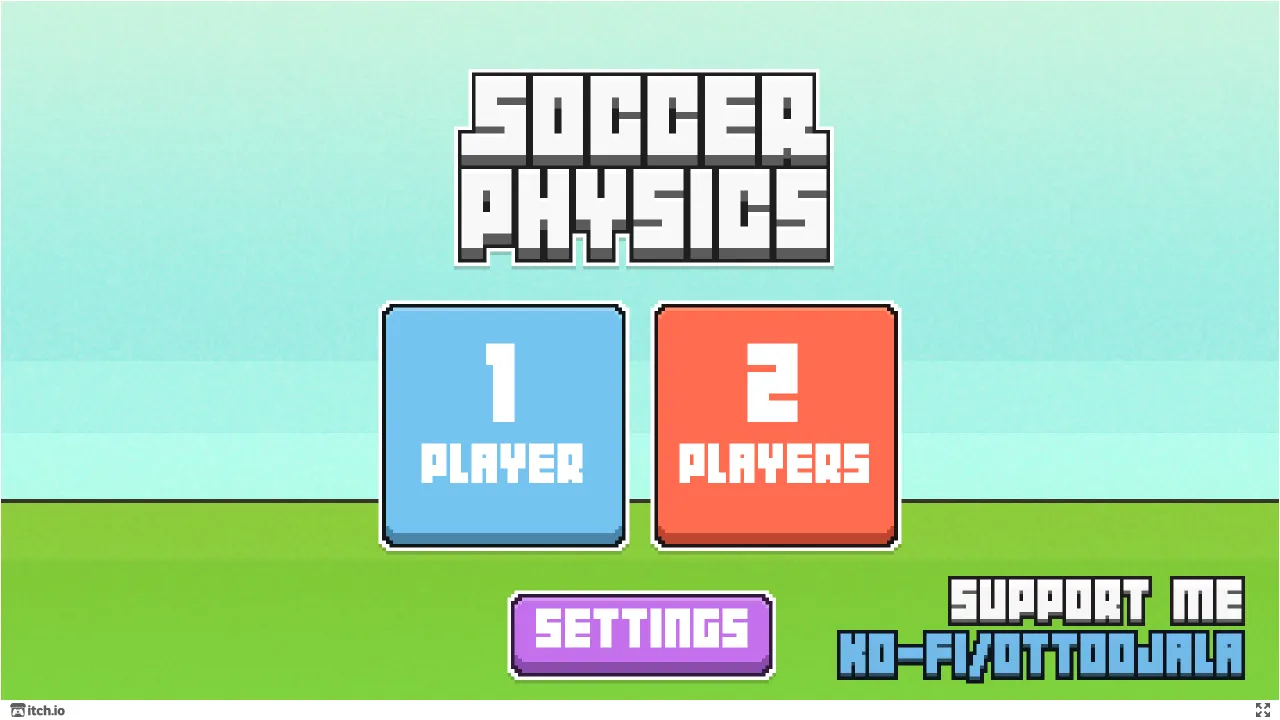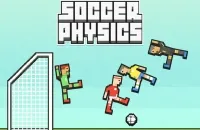Soccer Physics: Your Guide to Mastering Mayhem
Welcome, fellow soccer enthusiasts, to the most unconventional pitch you’ll ever set foot on! Forget the structured tactics and precise dribbling of traditional sports games. Soccer Physics isn’t about skill; it’s about embracing chaos, laughing off accidental own goals, and celebrating truly ridiculous wins. This guide will walk you through the delightful pandemonium, offering tips not on “how to play perfectly,” but “how to have the most fun while trying to score.”

Understanding the Glorious Madness
At its heart, Soccer Physics is a hilarious ragdoll soccer simulator. You control a two-player team, each with floppy, unpredictable physics. The catch? Both your players are controlled by a single button press. This means every jump, flip, or comedic tumble is a result of their current momentum and the sheer will of the game’s physics engine. Scoring is a mix of tactical positioning and pure, unadulterated luck, perfectly suited for quick, competitive matches.
The game keeps you on your toes with constantly changing field conditions. One moment you’re on a slick, icy surface, the next you’re floating in low-gravity, or dodging an extra-bouncy ball. These modifiers are the game’s true MVP, ensuring no two rounds ever feel the same.
The Challenge Defined
The game’s charm lies in its inherent challenge:
- Unpredictable Reactions: Every button press can trigger various effects, making direct control impossible.
- Physics-Driven Ball: The ball’s bounces are wild and often counter-intuitive.
- Dynamic Fields: Slippery floors, tiny goals, or odd environments demand constant adaptation.
- Single-Button Dilemma: Limited defensive and offensive options due to unified control.

Basic Maneuvering: Your One-Button Command
Your entire arsenal of movement and offense boils down to just two keys for two players:
- Player 1: Press W to jump and kick.
- Player 2: Press Up Arrow Key to jump and kick.
That’s it! Mastering Soccer Physics isn’t about precise joystick movements, but about split-second timing of these single button presses.
Strategies for Embracing (and Surviving) the Chaos
While “strategy” might sound like a strong word for such a random game, there are certainly techniques that can tip the odds slightly in your favor.
1. Timing is Everything (More Than Direction)
Since you can’t aim directly, focus on when you hit the button.
- Offensive Flips: If the ball is near your players, a well-timed flip can send them flying towards the ball, potentially knocking it into the goal or high into the opposition’s half. Sometimes, a gentle tap is enough to redirect the ball’s momentum.
- Defensive Jumps: If the ball is approaching your goal, a timely jump or flip can block the shot or send the ball away from danger. Don’t be afraid to sacrifice a player’s elegant posture for a chaotic save! Having a player “flop” into the ball’s path is often more effective than trying to perfectly intercept it.
2. Understand Your Players’ States
Your players react differently based on whether they are standing, falling, or already airborne.
- A standing player pressed to jump might launch forward with a kick.
- A player already in motion might execute a rapid flip.
- Experiment to see how different presses feel in different scenarios. There’s no fixed science, but you’ll develop a sense for their potential reactions.
3. Adapt to Field Modifiers on the Fly
Every new field condition presents unique challenges and opportunities.
- Icy Floors: Your players will slide much more. Short, controlled presses might be better than wild leaps that send you sliding past the ball. Use the slide defensively to cover more ground.
- Low-Gravity: Jumps are higher and longer. This is your chance for spectacular aerial goals or clearing the ball far downfield. Be wary of floating too high and being out of play.
- Bouncy Ball: The ball itself becomes an unpredictable projectile. Always anticipate a wild rebound. Focus more on positioning your players to intercept the next bounce rather than the current one.
- Shrinking/Expanding Goals: When goals shrink, defense becomes slightly easier, but offense is much harder. Don’t be discouraged if you can’t score immediately; focus on keeping the ball away from your side.
4. Defensive Mindfulness
It’s easy to get caught up in the offense, but sometimes the best strategy is to keep your players between the ball and your goal.
- Crowd the Goal: If the opponent is pressuring, don’t be afraid to keep both your players near your goal line, acting as human (or ragdoll) shields.
- Panic Flops: In desperate situations, a sudden, undirected flip can sometimes accidentally clear the ball or deflect it out of bounds. Embrace the “panic flip” as a legitimate defensive maneuver!
5. Embrace the Laughter
Finally, the most important strategy for Soccer Physics is to not take it too seriously. This game is designed for comedic value. Own goals, ridiculous misses, and improbable shots are all part of the fun. The more you laugh, the more enjoyable the experience will be. Play with a friend (it’s fantastic in local versus!) and enjoy the unpredictable ride.
Good luck, and may your accidental goals be plentiful!